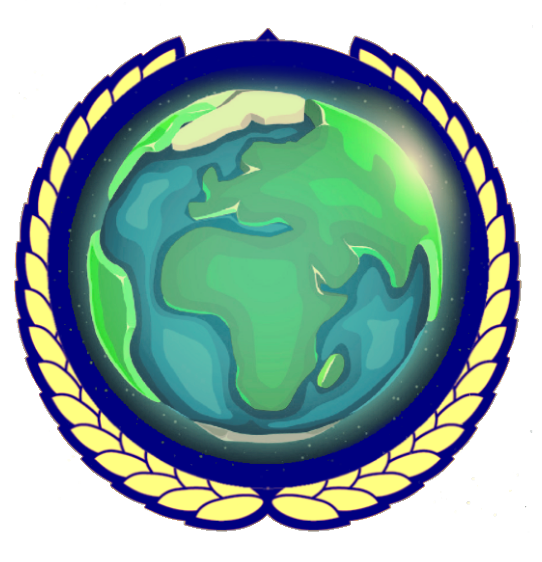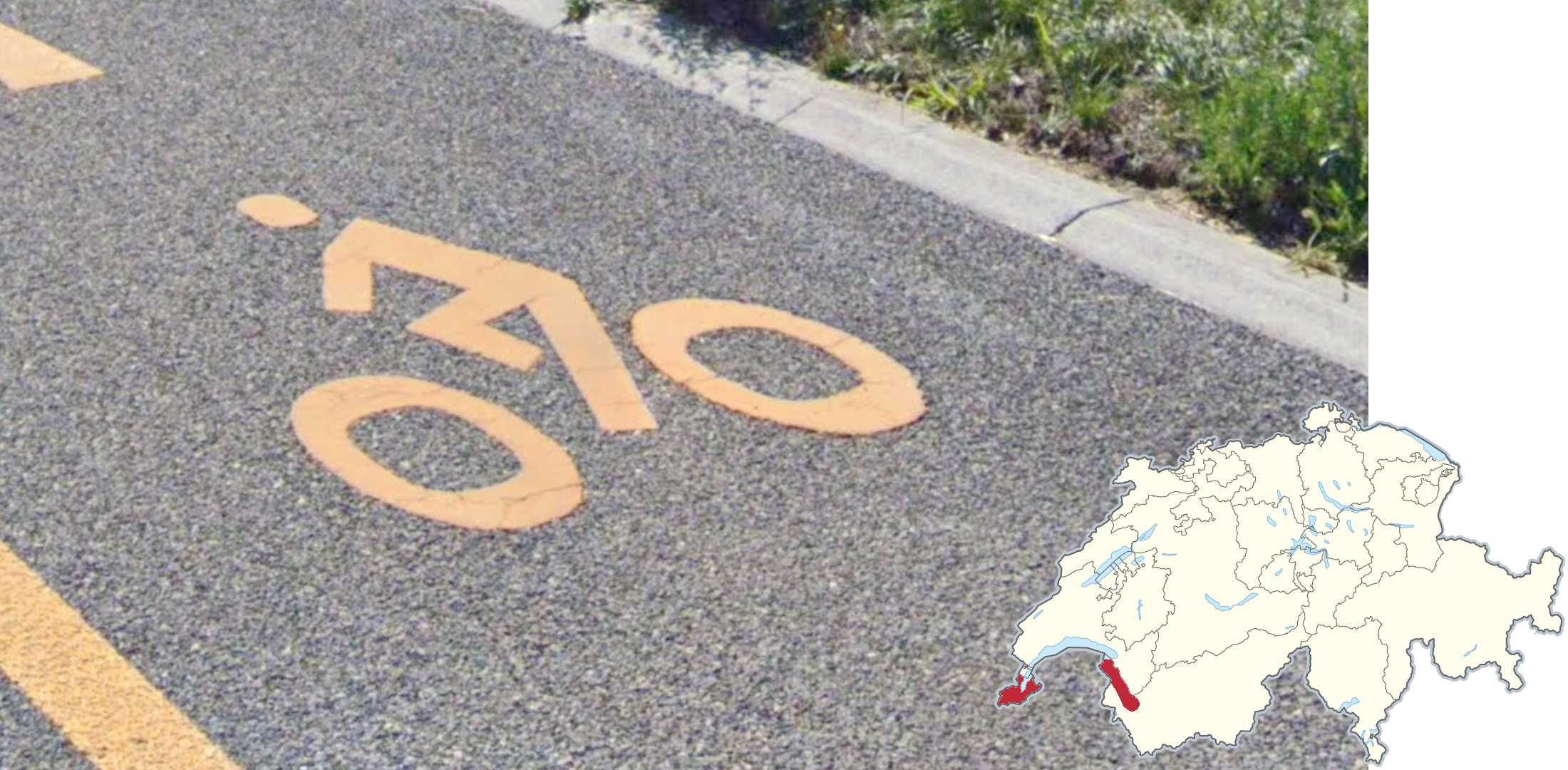
Switzerland
By far the most important way to recognize Switzerland, is that all car coverage is low-cam. This means that the camera on the Google car is intentionally set up lower than in most other countries. This can be recognized in two ways:
The car blur is significantly bigger.
Roads look wider and objects around you are seen from a lower angle.
Generally, the bigger car blur is the most consistent way to recognize low-cam.
NOTE: The only other countries that always have low-cam are Japan and Liechtenstein.
Swiss licence plates differ substantially from other European plates. They are fully white and lack the blue strip found in most other European countries.
Front plates are extremely short compared to most in Europe.
Rear plates can be either long or tall. In both cases the red country emblem can be seen on the left, while the canton emblem can be seen on the right.
Swiss bollards are black-and-white with white or grey reflectors. They can be either wedge-shaped or cylindrical with a rounded top.
NOTE: Liechtenstein uses almost identical round bollards.
The colour of directional signs indicates which type of road you are on. Main road signs will be blue, while side roads are white.
Major place names will frequently appear on blue signs, while smaller places tend to be on white signs. However, you can still find large city names on a white sign.
Pedestrian crossings are typically painted yellow and exclusive to Switzerland and Liechtenstein within Europe.
Swiss road signs commonly have a round, grey metal border around them.
NOTE: Liechtenstein uses almost identical directional signs. Somewhat similar metal borders are found on some directional signs in Denmark.
Town entry signs in Switzerland are usually white or blue, with a metal frame around them.
NOTE: On the back of these signs you may often find the distance to larger, nearby cities. Furthermore, the abbreviation for the canton can often be seen on the bottom of the sign, especially when the town is situated near a canton border.
Chevrons are black with a white arrow. You may also rarely find chevrons that are white with a black arrow.
NOTE: Austrian chevrons are red and white, or red and yellow.
Swiss and Alpine architecture in general largely consists of stone buildings painted in light and warm colours, often combined with wooden parts and details. Roofs are typically tiled and of a gable type. It is extremely common for windows to have wooden shutters which open horizontally in two parts.
Switzerland has four official languages: German, French, Italian and Romansh, which are spoken in the regions shown. Note that some areas, mostly near the region borders, are bilingual.
Cantons are the first-level administrative division of Switzerland. It is very common to find the two-letter abbreviation for the canton that you are in, as seen on some town entry signs. As such, remembering these can be a great asset when region-guessing Switzerland.
NOTE: If you happen to come across an unblurred licence plate, the first two letters will correspond to the canton that it is registered in.
Not unexpectedly, seeing typical Italian architecture in Switzerland should imply that you are in the Italian-speaking areas in the south, principally the canton of Ticino.
The architectural style is characterized by, typically very smooth, orange-yellow stone walls with multiple floors and orange or brownish tiled roofs. Green and brown Italian-style window shutters are common.
Elaborate timber frames, which are commonly painted red, are found in the northeast.
NOTE: Simpler timber frames in other colours can be found in other parts of the country.
Around Appenzell, most houses will consist of a large living house connected to a long barn, such that the roof of the living house and the barn are at a 90° angle.
The front facade of the living house will often be divided into small squares, with each window being perfectly contained within a square.
In Geneva and in the valley between Martigny and Lake Geneva, you can find bike path symbols painted on the road with a simplified person on top of two disconnected wheels.
NOTE: This stands in contrast to the rest of the country, where the symbol will be a somewhat detailed bike.
Generation 2 coverage is very limited in Switzerland. It can be found mostly near the border between the cantons of Bern and Valais, and on a few very short stretches in Schaffhausen.
NOTE: This does not include the many ski resorts with Generation 2 snow coverage, which can be found throughout the southern half of the country.
Large blue street signs, attached to a low double signpost, similar to directional signs in Denmark, are found in Basel.
GeoGuessr’s own official maps are not very good, for a variety of reasons. Plonk It recommends you play these maps instead:
Switzerland - Schweiz - Suisse - Svizzera - Svizra (map link) - 6k+ handpicked pinpointable locations.
IntersectionGuessr - Switzerland (map link) - 20k arbitrarily generated locations at intersections, and therefore potentially pinpointable (but this is not guaranteed).
Lakes of Switzerland - Schweizer Seen - Lacs Suisses (map link) - Map for practising lakes in Switzerland. Locations are not necessarily pinpointable.










































